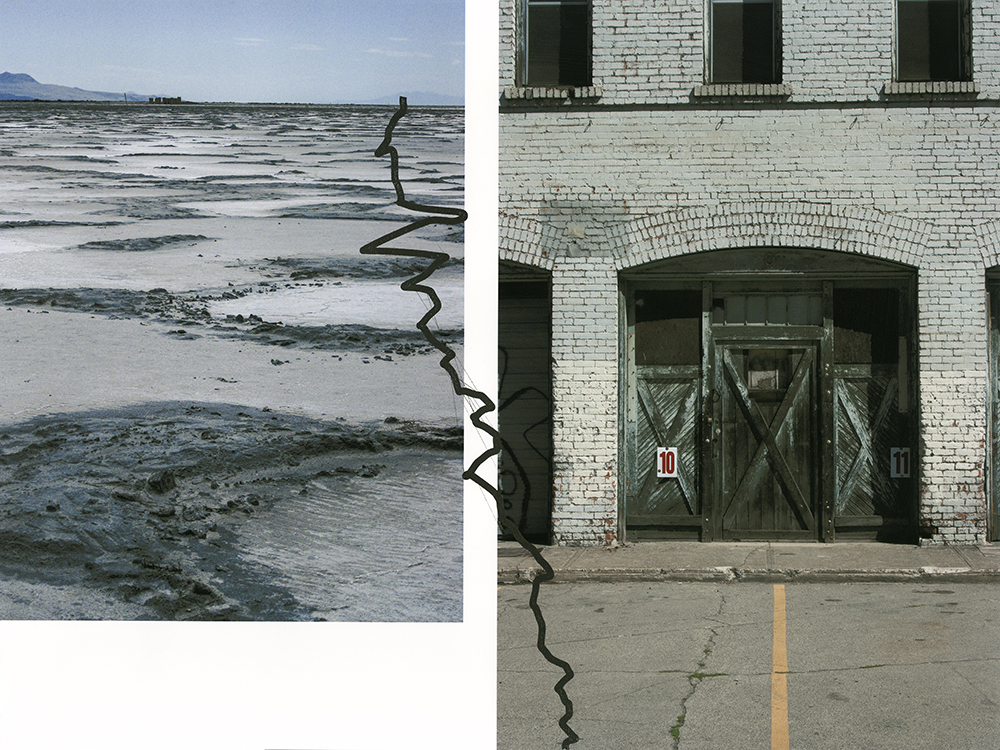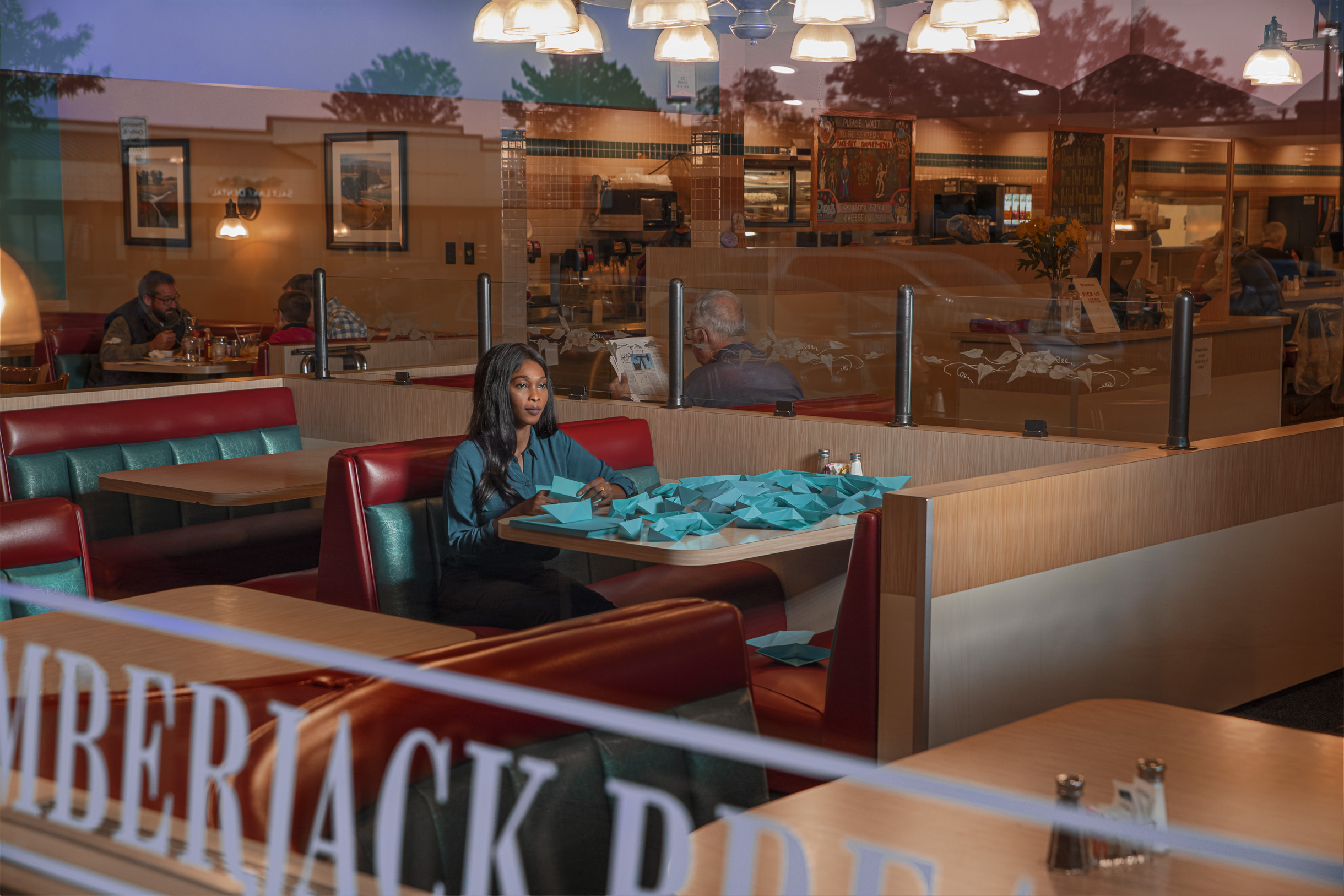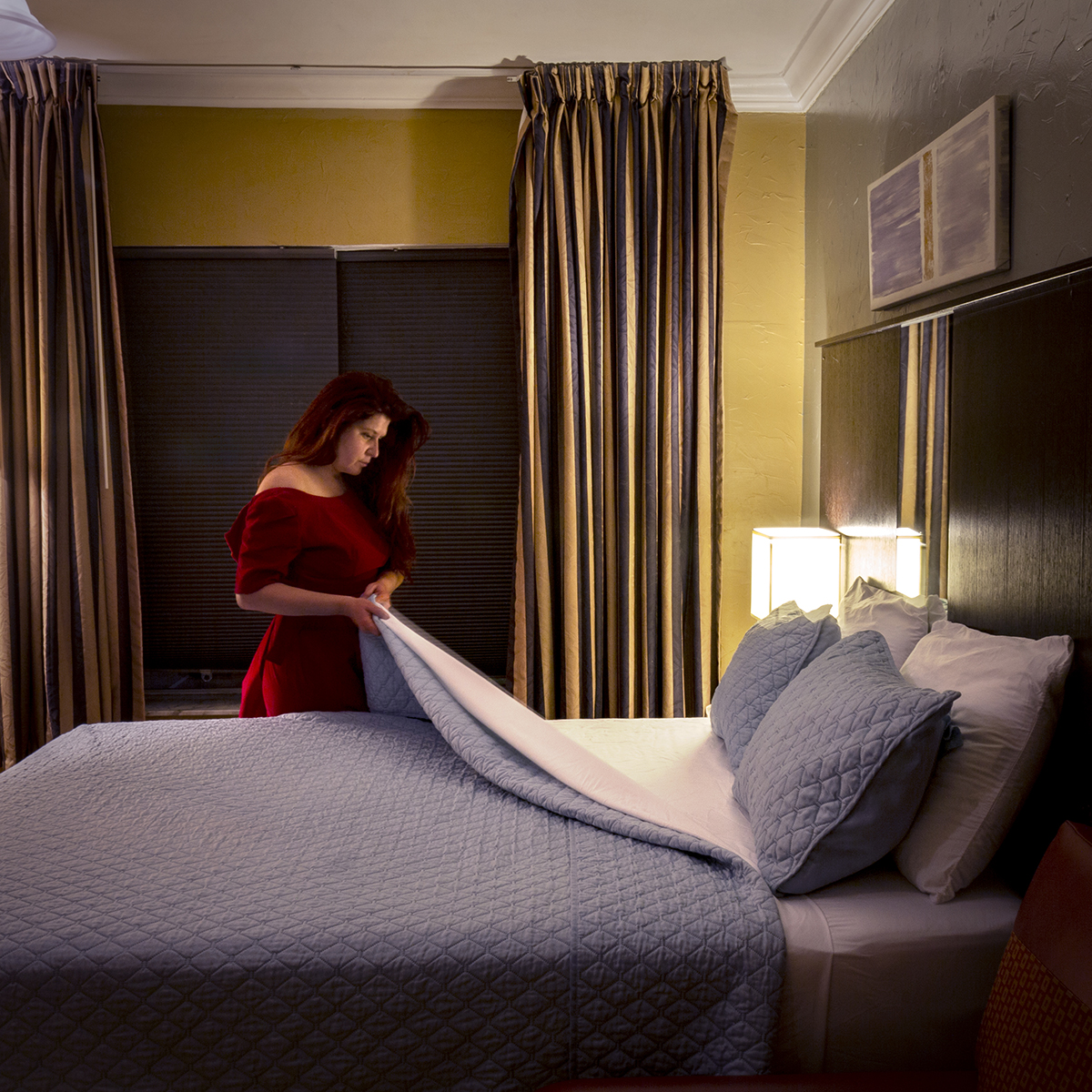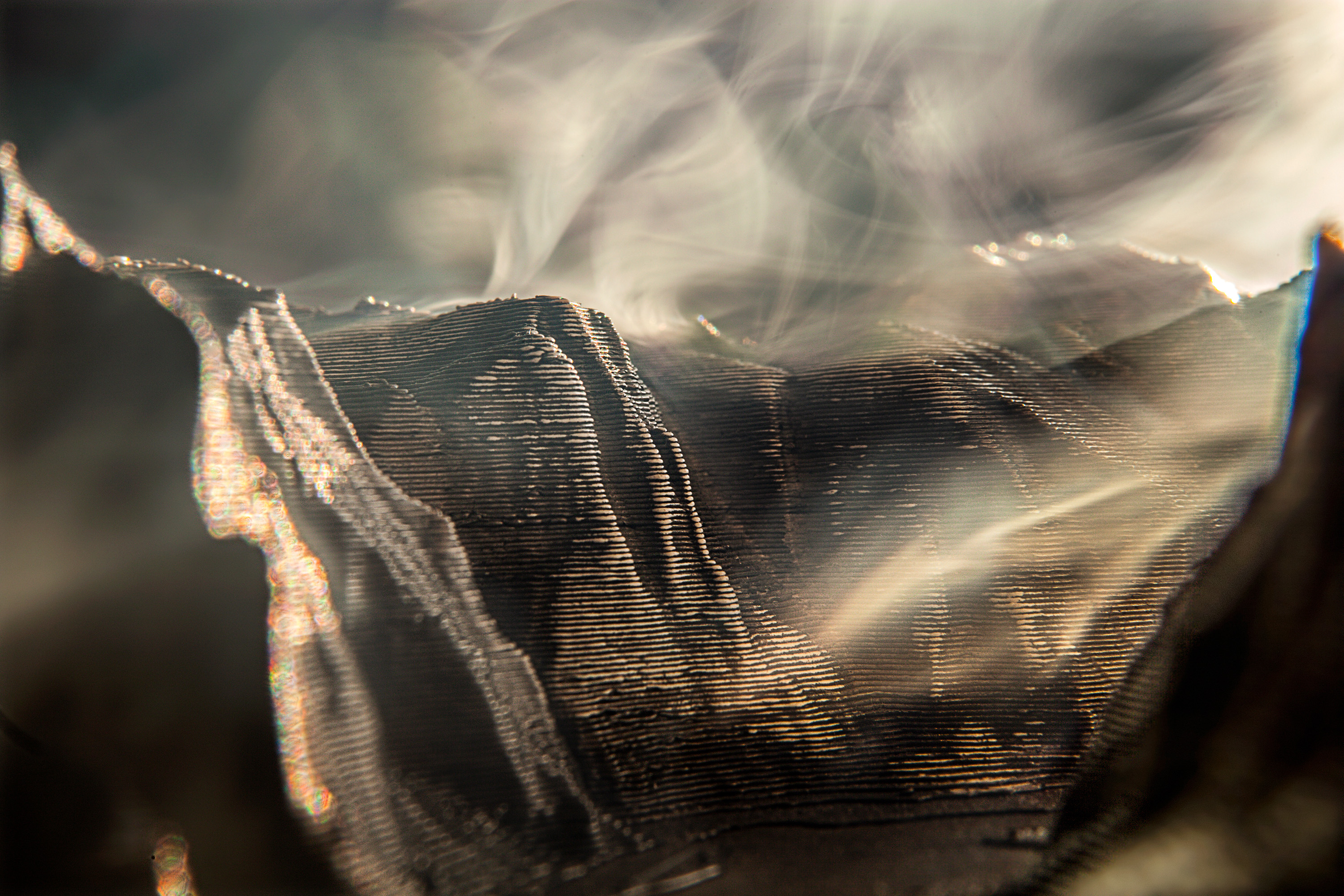Third Saturday: Photography
The new exhibition Space Maker at the UMFA can be a great inspiration for your own artmaking. We will get some unique ideas from photography in the exhibition to help turn your photographs into art. Using your own camera—whether it is old-fashioned film, a digital camera, or one on your phone—we will explore ways of constructing a photograph and elevating your photography skills.
There are many ways to focus on a work of art—for this conversation, we are going to look specifically at how photographers construct their photographs.

Look closely at these two photographs. When two photographs are shown side by side it is called a diptych. Usually, the two images in a diptych are related to each other. How do you think these two photographs are related? One hint can be the title of the artwork: The Summary of an Adventure. Where do you think these photographs were taken? What kind of adventure would these two places illustrate?
Another hint can be the line that is drawn between the two photographs. What kind of line is it? How do you think it relates to the idea of an adventure? Have you ever marked a map of your route when you go on a trip?
![]() When you take photographs, think about other ways you could connect two photographs together. Some ideas are to link the subjects (what the photographs are about) or color (whether the colors are the same or contrast) or composition (how you frame each photograph and where the objects are in the frame). Or you can use your imagination!
When you take photographs, think about other ways you could connect two photographs together. Some ideas are to link the subjects (what the photographs are about) or color (whether the colors are the same or contrast) or composition (how you frame each photograph and where the objects are in the frame). Or you can use your imagination!

What is happening in this photograph? Who is the woman in the center and what is she doing? Can you tell that the artist posed this woman in the diner to take her picture? A posed photo is when the artist arranges everything in a certain way, from the setting to the objects, to even the person. Posing the subject of your photograph is very different than taking a candid shot. A candid photo is a photo of a person taken casually, especially without the person’s knowledge.
When artists decide to pose a photograph, they think very hard about every detail. Why do you think the artist posed the woman in this way? Why do you think he put the paper on the table like that? Did you notice that the photograph was taken from outside through the window? Why do you think Watkins took the photo from outside?
![]() How does knowing that this photograph was posed change what you think of it? Try taking two photographs of a person: one that is candid and the other posed. Things to think about: What objects or people will be in your photograph? How will you pose them? Which type of photograph do you like better?
How does knowing that this photograph was posed change what you think of it? Try taking two photographs of a person: one that is candid and the other posed. Things to think about: What objects or people will be in your photograph? How will you pose them? Which type of photograph do you like better?

This photograph is also posed. The artist set up the person and objects to be exactly how she wanted them to be. Look carefully at the photograph. How can you tell it is posed? What expression is on the woman’s face? How is the room arranged? Why do you think the artist wanted to pose the photo instead of taking a candid photo?
![]() Try this experiment with your own photography. Take a candid photograph of someone doing something. Then pose that person doing the exact same thing. How does the posed photograph look different than the candid photo? Can you tell which one is which?
Try this experiment with your own photography. Take a candid photograph of someone doing something. Then pose that person doing the exact same thing. How does the posed photograph look different than the candid photo? Can you tell which one is which?

Posing is one way that artists construct, or put together, their photographs. Another way is to put photographs together in a collage. A collage is made of parts of photographs put together by layering the actual paper photographs. A collage can also be made by using the same roll of film more than once, or digitally by layering digital photographs together in a computer program like Photoshop.
Look closely at this photograph by Jaclyn Wright. She has both posed the people in the photograph and also created a collage by exposing the film to five different images. She creates the images by using cut-out slides in front of the lens so only parts of the film are exposed. What images has she layered in the photograph? How do the colors help you identify what you are looking at? Which images look like they are on top and which are underneath?
![]() Try making your own collage. If you are able to print out some photographs you have taken, try ripping or cutting up the photos and layering them to create a new photograph. You will have to make some decisions: What shapes will your cut and ripped photographs be? What part of the photograph will you keep? Which ones will you lay on top and which ones will be on the bottom?
Try making your own collage. If you are able to print out some photographs you have taken, try ripping or cutting up the photos and layering them to create a new photograph. You will have to make some decisions: What shapes will your cut and ripped photographs be? What part of the photograph will you keep? Which ones will you lay on top and which ones will be on the bottom?

Another way to construct a photograph is to make the object you are photographing—like a sculpture—then photograph it to look like something else. Study this photograph by Edward Bateman. It looks like a landscape but the artist created models of mountains out of plastic and then photographed them to look like a landscape. Why do you think Bateman wanted to create the 3-D printed mountains to photograph? How does knowing how he created the photograph change how you think about it?
![]() Try constructing a landscape or environment to take a photograph. You can arrange blankets on your bed, cardboard boxes on the floor, leaves on the sidewalk, or whatever your imagination can think of! Photograph your construction to make it look like a different landscape. Try getting close up to make the objects look larger. You can use a black and white setting or film to help mask the real colors and give the illusion of a different place. You can even take a picture upside down to really change the landscape. What other objects could you use to construct a photograph?
Try constructing a landscape or environment to take a photograph. You can arrange blankets on your bed, cardboard boxes on the floor, leaves on the sidewalk, or whatever your imagination can think of! Photograph your construction to make it look like a different landscape. Try getting close up to make the objects look larger. You can use a black and white setting or film to help mask the real colors and give the illusion of a different place. You can even take a picture upside down to really change the landscape. What other objects could you use to construct a photograph?
All of the artwork in Space Maker is made by University of Utah’s Art and Art History Faculty. If you are interested in pursuing your artwork further, the University of Utah has a Photography and Digital Imaging emphasis for art majors, or you could minor in Digital Photography if (or when) you are a University of Utah student.
Thanks to Professors Edward Bateman and Jaclyn Wright from the U of U Department of Art and Art History for their help and expertise.
Third Saturdays are funded by Salt Lake County Zoo, Arts & Parks (ZAP).
